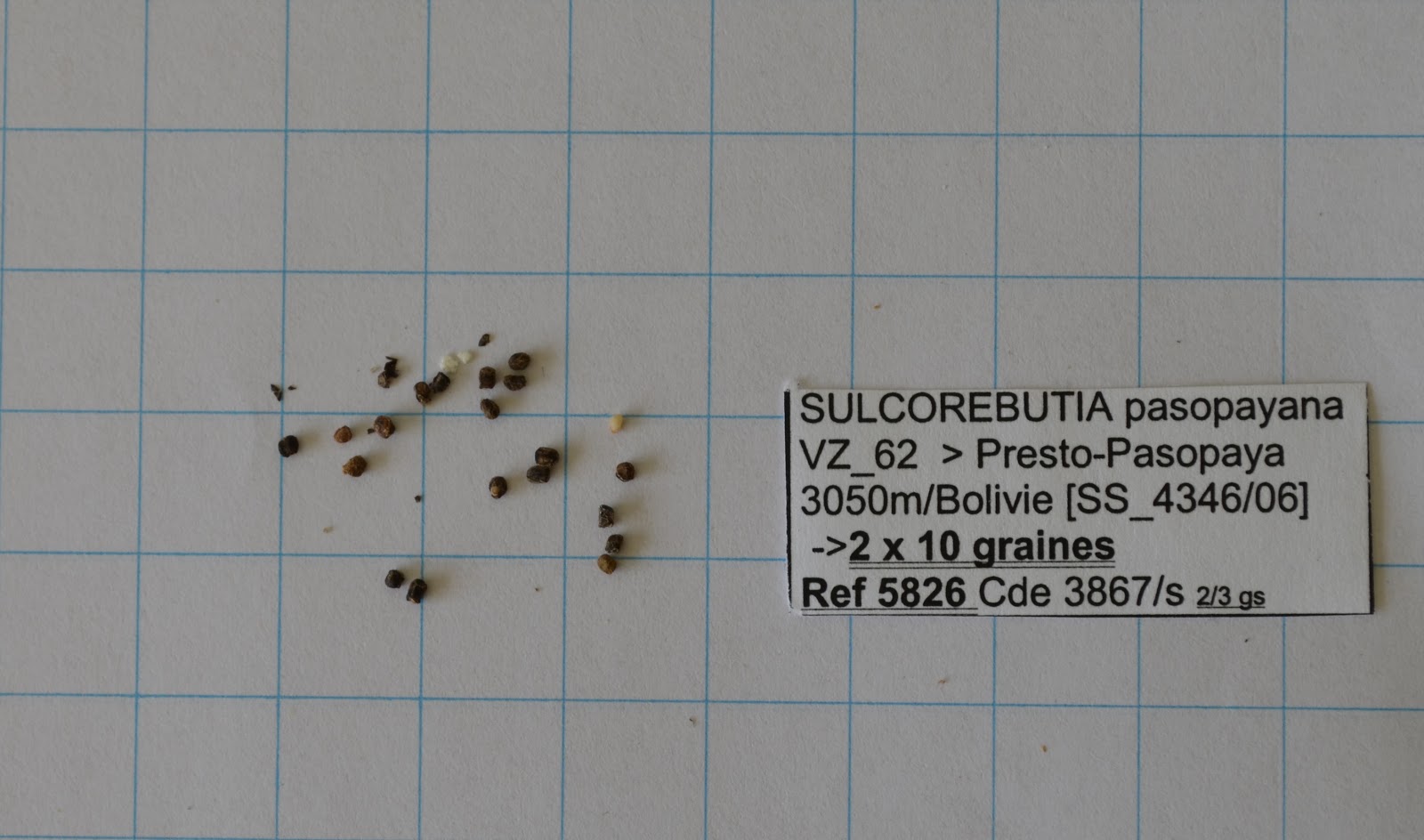Hello to all of you! What a nice day to sow! Not on April the first, as I normally do, but on April the fifth. I just had to wait for some true spring weather before I could start putting seeds into the soil. A nice and sunny Easter it is and after spending some time with my wife and kid (searching eggs and stuff), it's time to sow!
This is the day that I'm the only one that is allowed in the kitchen. My wife hates it! All that mess: seeds, soil and gravel all over... Well, everywhere! And it takes hours!
 |
| Preparations |
It's always good to have everything ready before you start. It's just not cool if you have to search for stuff when you're busy. I like to work organized and structured.
 |
| The seeds |
Let me just name everything I'm going to sow again. This time with two new additions to my plan (of course...):
Cacti:
- Astrophytum caput-medusae (40 seeds)
- Sulcorebutia arenacea (100 seeds)
- Sulcorebutia azurduyensis (20 seeds)
- Sulcorebutia canigueralii (15 seeds)
- Sulcorebutia pasopayana (20 seeds)
- Sulcorebutia rauschii (20 seeds)
- Trichocereus pachanoi (100 seeds)
- Echinocactus texensis
- Ariocarpus agavoides
Other succulents:
- Agave parryi (20 seeds)
- Stapelia grandiflora
E. texensis and A. agavoides are added as you can see if you compare this article with the previous one. E. texensis is also known as the Horse-crippler because of its strong and "mean" spines which are known to puncture everyone that steps on it. I just love the name! This and of course a pretty appearance convinced me to buy the seeds. A. agavoides came along with the rest of my order from Mr. Gerardo. A very nice thing to do and highly appreciated!
Ingredients
 |
| Soil ingredients |
- 20% Fine gravel
- 30% Cat litter
- 50% Sowing soil
If you're planning to use these ingredients for your soil mixture: please take care to wash the gravel and especially the cat litter very well! Keep in mind that not all cat litters are good to use in your mixture. An easy way to test this is to put a couple of spoons of cat litter in a glass of water and then leave it alone for some days. If the litter hasn't turn into pulp, it's probably usable.
 |
| Also handy |
Just some pots, plastic to cover them up, rubber bands and my temporary pocket knife.
 |
| The soil |
The soil is already mixed here and the two small bowls contain sowing soil and fine gravel (I'll explain you later what I'll do with it)
 |
| Sterilization in the oven |
45 minutes in the oven to sterilize the soil. This is to assure that there won't be anything alive inside the pots besides the seeds!
 |
| Ready to sow! |
As you can see in the photo up here, I'm ready to sow! I'm putting a thin layer of normal sowing soil on top of the mixture, then I add the seeds, then another thin layer of sowing soil and then a little bit of fine gravel. My theory is that the soaking and muddy sowing soil will increase the germination chance, that the mixture beneath it will guarantee a healthy and "dry" growth for the roots and that the fine gravel on top of it all will help the small seedlings to stand up right and strong and will prevent rot at the lower parts of the plants. I'm still experimenting and I hope to find a successful way for me to use in the future. Let's see what happens!
The seeds
I think it's amazing to see all the different forms and sizes of plants that belong to the same family. Very fascinating, don't you think?!

.JPG)
.JPG)
.JPG)
.JPG)
.JPG)
.JPG)






















